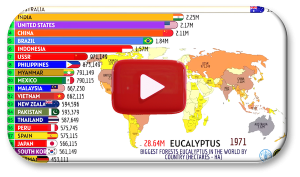Diversification, spreading your money across a range of different assets rather than putting it all into one place, is one of the core principles of investment risk management. That's because investment returns from different assets are never consistent.

The Spanish writer Miguel de Cervantes Saavedra isn't widely regarded as a renowned investment strategist.
But it's in his most famous literary work Don Quixote, published in 1605, that one of the quintessential investment phrases, still widely used today, first emerges.
Through the novel's central character, he advises that it's never wise to put all your eggs in one basket.
Diversification, spreading your money across a range of different assets rather than putting it all into one place, is one of the core principles of investment risk management.
That's because investment returns from different assets are never consistent.
Let's take a look at some of the asset returns from the 2019-20 financial year. The best-performing asset was United States listed shares, which returned 9.6 per cent. The worst-performing asset was Australian listed property, which fell 21.3 per cent. Australian shares fell 7.2 per cent.
But if you compare those results with the previous year, it was a very different story. Australian listed property was the best performer, gaining 19.3 per cent. US shares delivered 16.3 per cent, and Australian shares 11 per cent.
When we reach the end of June this year the returns from equities are likely to reflect the strong rebound on share markets since the first quarter of 2020.
In other words, asset class returns are ever-changing. So, having your investment money in several asset pots, instead of just one, will invariably smooth out your overall returns over time.
The Australian story
There are various research reports and data sources that provide an indication of the diversification of Australian investors.
Data from the 2020 ASX Australian Investor Study shows around nine million Australians hold investments outside of their home and superannuation.
By median dollar value, according to the Australian Securities Exchange (ASX) data, residential investment property on average accounts for the biggest amount of total investor assets ($338,261). Other types of investment property account for a further $207,347.
Straight away, it's evident there is a definite investment preference towards physical properties.
About 6.6 million Australians do have market-listed investments, but the median-value holding of shares (outside of superannuation) is much lower than in investment property at just under $42,000.
The vast bulk of these are direct shareholdings in Australian-listed companies. Many investors have little, or no, exposure to global companies.
The median amount held in shares is also slightly lower than the $43,000 median amount invested in term deposit savings accounts.
Interestingly, the ASX research found that only three in 10 investors rated diversification among their key investment considerations, and many admitted their portfolios were not well diversified.
Another good diversification indicator is data from the Australian Tax Office that shows the investment allocations of self-managed superannuation funds.
The latest data available up to 30 June 2020 shows SMSFs had about 26 per cent of their total assets ($191 billion) in Australian shares.
They also had just over 21 per cent of their assets ($156 billion) invested in cash and term deposits, which at current interest rate levels is earning a return of between 0 per cent and 1.5 per cent.
Unlisted trusts, which by and large represent unlisted property securities, are third-highest in terms of total SMSF assets, accounting for around $86 billion of capital (11.7 per cent).
A third diversification indicator is monthly data from the Australian Prudential Regulation Authority.
It shows Australian households collectively have a massive $1.1 trillion deposited in savings account products, with the majority of that held by the country's four biggest banks earning very low returns.
Alternative asset allocations to savings accounts that typically earn higher returns include managed cash funds and fixed interest (bonds).
Getting the best mix
How you allocate your investment capital is one of the most important, and often difficult, decisions.
Your asset allocation strategy should always be in tune with your investment goals and your tolerance for taking risk.
Rather than trying to do it themselves, more and more people are investing across different asset classes such as Australian and international shares, listed property, fixed interest and cash using listed exchange traded funds (ETFs) and unlisted managed funds.
There are also pre-set diversified funds that cover multiple asset classes, which can be readily accessed on the ASX.
Like most things in life, successful investing is all about balance.
As we head further into 2021, why not review your investment balance to make sure you are not too heavily tilted towards one particular area (with too many financial eggs in one basket)?
Spreading your investments across a wide variety of assets creates a diversified portfolio, can help reduce the risk of loss, and creates a much smoother investment experience.
Diversification means you don't have to worry about trying to time the markets for the right time to invest, because you are always invested across a range of different assets.
If you're unsure of whether you do have the right assets mix, consult a licensed financial adviser for some professional guidance.
An iteration of this article was first published by Canstar on 14 January, 2021.
By Tony Kaye
Senior Personal Finance Writer, Vanguard Australia
02 Feb, 2021
vanguard.com.au



